OURAY (Day 18 - part 5)
The nomadic tribe of the Tabeguache Ute had hunted in these mountains for centuries, following the abundant game in the summer months. In the 1700's, they served as expedition guides for the Spanish explorers. Prospectors began arriving in 1875, and within just a few decades, they had changed the face of the landscape, covering it with over 30 mines and many large stamp-mills. Originally named Uncompahgre (the Ute word for "hot water springs"), the town became incorporated in 1876 as Ouray, after the famous local chief.
Ouray's mother was an Uncompahgre Ute and his father was half Apache. Born in New Mexico in 1833, he learned Spanish and English and spent his youth working for Mexican sheepherders and fighting against rival tribes, such as the Sioux and Kiowa. When he was 18, he travelled to Colorado, where his father had become made the leader of the Tabeguache Utes. When his father died in 1860, Ouray became chief of both the Tabeguache and Uncompahgre Utes.
But these were tough times as white settlers continued to flood in and take native lands. While some chose the path of war, Ouray always believed in finding a peaceful solution. He did his best to negotiate and honor treaties. Respected for his intelligence and diplomacy, he even went to Washington DC in 1868 to speak on behalf of his people.
Unfortunately each new compromise simply meant more loss of land for the Utes. But Ouray still believed that war with the whites would be the doom off his people. Many of his own people tuned on him, calling him a coward, and attempts were even made on his life. Tensions continued to rise and in 1879 there was a Ute uprising (known as the Meeker Massacre). The US government responded by sending in 200 troops. Ouray did his best to secure a treaty for those who wanted to stay in Colorado, but the following year, all Utes were forced onto reservations in Utah.
Ouray died in 1880, sill while trying to make negotiations, from a painful kidney ailment at the age of 47. His people, a once-mighty tribe that had ruled nearly 23 million acres, had lost their land and their way of life.

Ute Chief Ouray in 1874. Ouray means "arrow" and comes from the meteor shower that streaked the sky above Taos on the night he was born

Ouray with his second wife Chipeta (White Singing Bird). She was only 21 when Ouray died and lived to be 85. They never had any children.
Ouray’s first wife, Black Water (or Black Mare), had died shortly after the birth of their son, Queashegut (whom Ouray called Paron, meaning apple, because of the boy's round face). Ouray then married the child's nursemaid, Chipeta, in 1859 when she was 16 years old. Unfortunately the boy was captured by the Sioux when he was only five years old. Ouray never learned what happened to his son, though he preferred to believe he had died rather than the more likely truth that he had been raised by their enemies and was taught to fight against his own.

Entering Ouray

For lunch, we randomly chose a cute little place called Maggie's Kitchen. But inside was even more amazing... every square inch of space was covered with 'graffiti.'


There was writing from floor to ceiling, from wall to wall... absolutely ever spot possible.
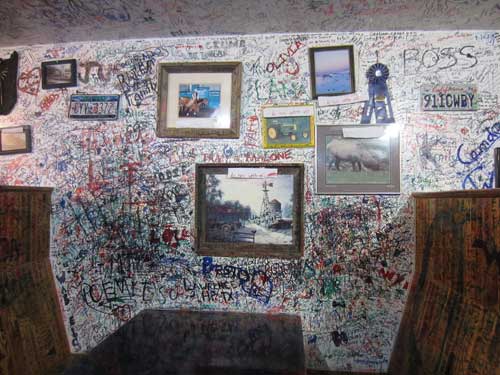


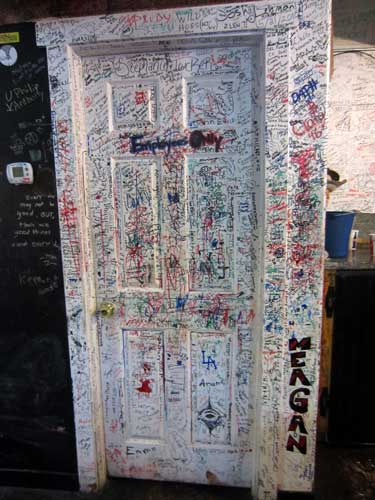







The bathroom was spared. It felt like a different world, a relaxing oasis away from the marker frenzy outside.
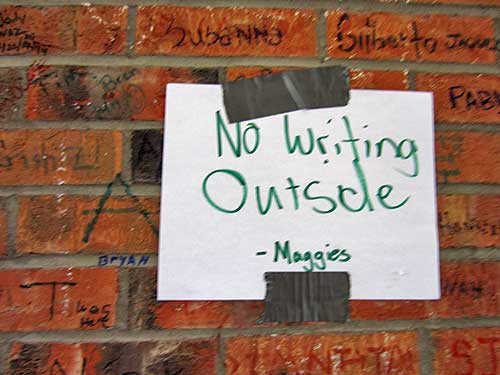
Apparently people don't listen.
We then took a bit of time wandering up Main Street. Many of the town's main buildings built between 1880 - 1900 are still standing and have been restored.


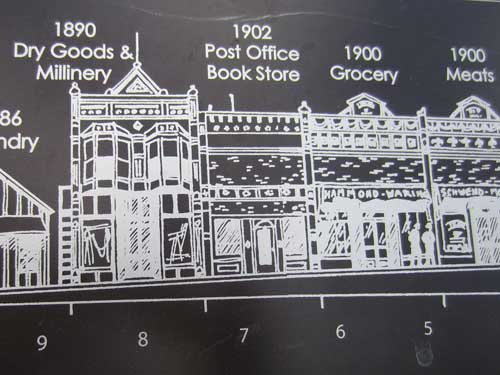
Look familiar? See above photo!
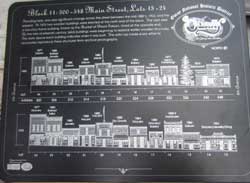


To see what various blocks used to look like in the past, click on each of these signs for a larger image.
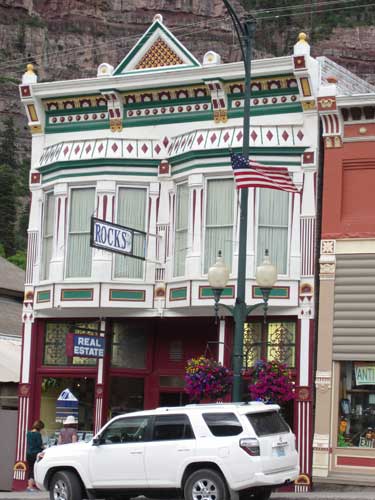
Albert Jeffers and Henry Witterding erected this building in 1890.
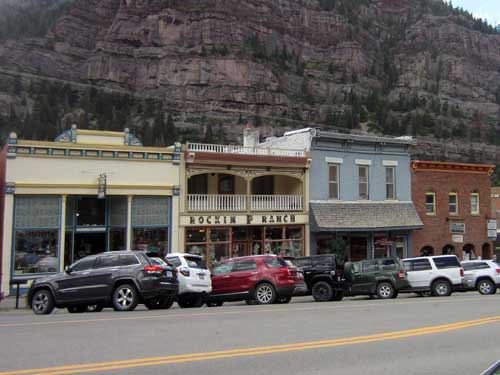
The building on the far left was built by grocer E.H. Powell in 1895. His store operated there for over 40 years.

Louis King built this building in 1892 soon after his first one burned down. Over the years, it housed a saloon, cafe, offices, hotel and even a livery and barn.

The Beaumont Hotel had its grand opening in 1887. For 50 years it was one of the state's most elegant hotels. But as the region's mining declined, so did its occupancy rate. In 1964, it had to close its doors. It remained vacant for 38 years until it was rescued and revived.


The Western Hotel, built 1891

The Mesker Brothers Iron Works (based in St. Louis, Missouri) was a manufacturer of ornamental sheet-metal facades and cast iron storefront components from the 1880's through the mid-1900's. They also made tin ceilings, iron railings, stairs, roof cresting, iron awnings, skylights,and freight elevators. In 1915 catalog, there were Mesker storefronts in every state, including 4,130 in Indiana, 2,915 in Illinois, 2,646 in Kentucky and even 17 in the territory of Alaska.
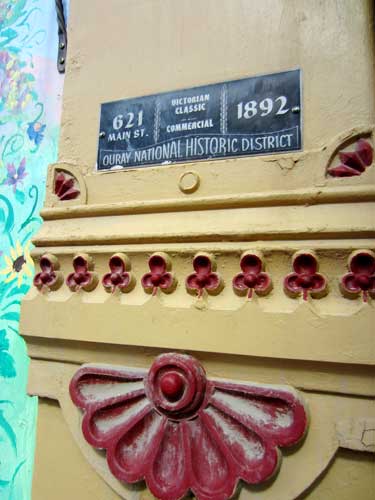


In case you were wondering

Need to tie up your horse?

A cute way to display old mining equipment



The city hall, built in 1900, rests against a backdrop of mountains.

Directly behind city hall stood a tall metal bell tower.

Cascade Falls again


This was Joanne's favorite!

This was mine!
It was another 35 miles or so to our hotel in Montrose. The drive continued to offer us amazing scenery.

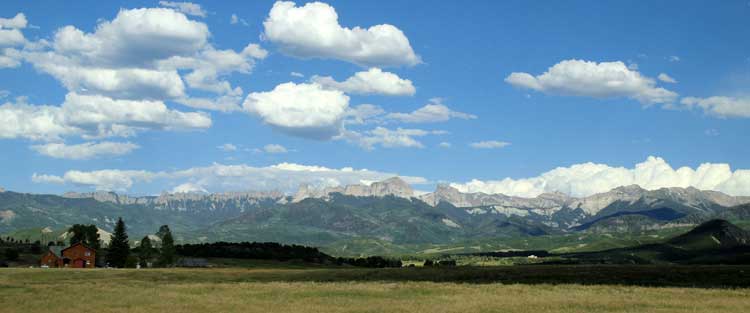

In certain wildlife areas, nighttime speed limits are established to hopefully decrease animal collisions, mostly with deer.

Extra high fencing was also in place.


Our hotel greeted us with cookies!

I had to wonder if the antler chandelier in the lobby was made from all the wildlife collisions BEFORE the high fence and lowered speed limit!
return • continue

